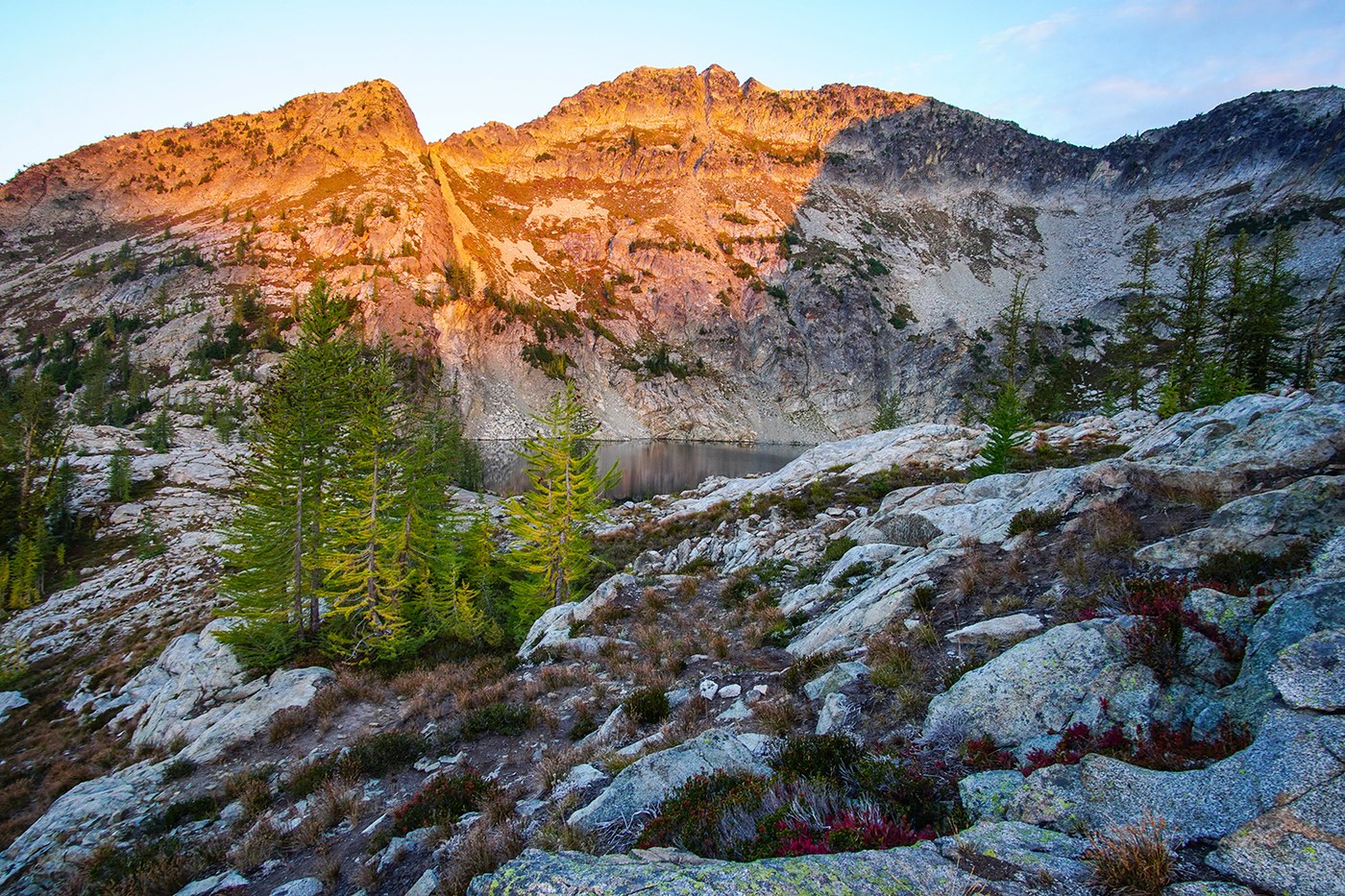We arrived at the end of the road—permit in hand—and donned packs under warm sunshine and hazy skies. We proceeded easily through the burn area marveling at the tall standing dead trees, black from top to bottom, who are still resisting gravity and the urge to be consumed by the new forest and born again. Crossing the North Fork of the Twisp River on a sturdy footbridge we began the ascent to Twisp Pass. Up through cliff sides and parkland forest, we eventually arrived at the scenic but lightly treed pass with the Vegas sized National Park boundary sign. So far minimal brush and no downed trees.
From the pass we traversed upward toward the lake on a pleasant path. Stiletto Lake is not visible until you have practically stumbled into it, and like a period at the end of a sentence, it marked the end of our day's journey.
After a warm and moonlit night, we sipped coffee and observed a lone mountain goat wearing its brand-new winter coat wandering the lake shore. In late morning we meandered our way to Copper Pass, picking blueberries until our hands could have gotten us mistakenly accused of murder.
The Copper Pass trail drops quickly through brush near the invisible North Fork which is still in its infancy up high. As the trail dives into the forest, heavy brush, eroded tread, and down trees (mostly stepovers) consume the trail. While never difficult to follow, the trail is often only visible underfoot. Lower down a several hundred foot section of jackstraw trees have obliterated the trail. Conditions do improve closer to the junction with the Twisp Pass Trail as it appears recent brushing and tree clearing have occurred.
Upon reaching the junction we darted down valley to complete the lollipop nearly as quickly as the birds darted between the trailside trees beside us.







Comments